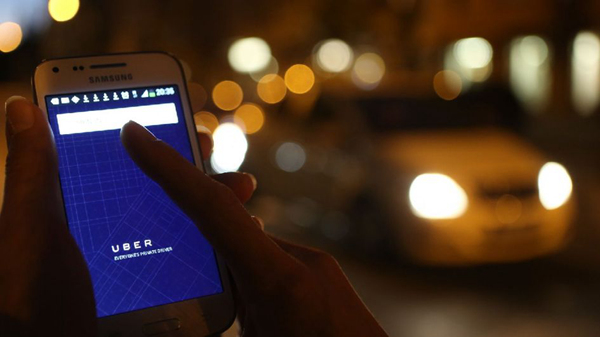Innovations raise questions for transportation regulators
- By Mitchell Blatt
 0 Comment(s)
0 Comment(s) Print
Print E-mail China.org.cn, August 2, 2016
E-mail China.org.cn, August 2, 2016
|
|
|
San Francisco-based ride-hailing giant Uber Technologies Inc. will merge its operation in China with local archrival Didi Chuxing Technology Co., media reported on Monday. [Xinhua] |
"China has become the world's largest market for car-hailing services," the Chinese Ministry of Transportation chief Liu Xiaoming said on July 28, after the government passed new regulations to standardize the ride-sharing market.
Uber and Didi Dache are now on legal grounds nationwide and must comply with a number of uniform regulations aimed at safety. The Shanghai Daily cited the move as part of an effort to curb congestion. It happened at the same time as a push in Beijing to expand bike lanes on some streets.
All across the developing world, transportation is a big issue. In India, urban rail transit and subways are developing quickly under Prime Minister Modi, who has an optimistic plan to bring urban rail to 50 cities from just eight now. In Jakarta, Indonesia's first MTR line is scheduled to open next summer. Chinese cities across the country are expanding their metro systems and adding new lines.
But the capital city in a country south of China has perhaps the most ambitious -- and possibly misguided -- plan to transform the state of its transportation yet. Anyone who has visited Vietnam from abroad must be astonished by the vast number of motorbikes crowding every street in rows of three, four, or more. Trying to cross the street is a challenge, as motorbikes come whizzing by from both directions with seeming abandon. Hanoi's mayor, Nguyen Duc Chung, said something has to change. By 2025 he has proposed banning motorbikes.
When I visited Vietnam, my deepest impression of the motorbikes wasn't about danger but concern for infrastructure. Imagine if those four people on motorbikes, sharing one lane side-by-side, are all driving cars in fifteen or twenty years, I thought. If Vietnam keeps developing its economy, eventually more people will be able to afford automobiles, which take up more space on the road, and the congestion on display will be many times worse.
Hanoi's government is trying to cope with the problem. The roads can't handle too many more motorbikes, either. But they need to make sure that the alternative forms of transit introduced can cope with demand. Hanoi had planned in 2008 to open metro lines, but its first line has been delayed by two years to a projected opening in 2018 now. In total, eight lines are currently planned.
Leaving the roads for automobiles only might make things easier for drivers and pedestrians, but it must not be done at the expense of the ordinary citizen, who can't afford a car. According to an international survey by Pew Research Center in 2015, only 2 percent of Vietnamese own a car while 86 percent own a motorcycle.
While transportation is a particular problem in fast developing cities that do not currently have enough infrastructure, the future of automobiles faces unknowns in the developed world as well. Will people even own personal cars in the future?
While consumers in the developing world are buying more and more cars, consumers in the West are buying fewer. In the United States, where 88 percent of adults owned cars in 2015, millennials are about 30 percent less likely to buy a car than the previous generation.
Why, many young adults think, when you can book a driver to pick you up from your door at a low rate and not have to worry about driving, parking or insurance would you want to have all the hassles that come with your own car? In the future, there might not even be any drivers if Google and Apple get their way and introduce self-driving cars.
All of this raises new and unprecedented questions for transportation regulators. Uber and Lyft are currently battling regulations and court cases in localities around the world. Are their drivers independent contractors, who would have to be licensed as businesses, or are they employees, who would be entitled to greater benefits? Who covers the cost if one crashes and injures a pedestrian or passenger?
If and when drivers are eliminated for fully automated cars, more questions arise. In the event of a crash where a car is driving itself, who will take the blame? Furthermore, how must the car's system be programmed to decrease casualties when it tries to avoid an accident? It raises the hypothetical question of whether a switch should be pulled to change a train's trajectory when heading down one of two paths towards bystanders.
None of these questions will be easy to answer, and they will cause fierce arguments, but scholars, businesspeople, engineers, and officials should start to consider these questions now so that we can meet them with some level of preparation.
The author is a columnist with China.org.cn. For more information please visit:
http://www.ccgp-fushun.com/opinion/MitchellBlatt.htm
Opinion articles reflect the views of their authors, not necessarily those of China.org.cn.






